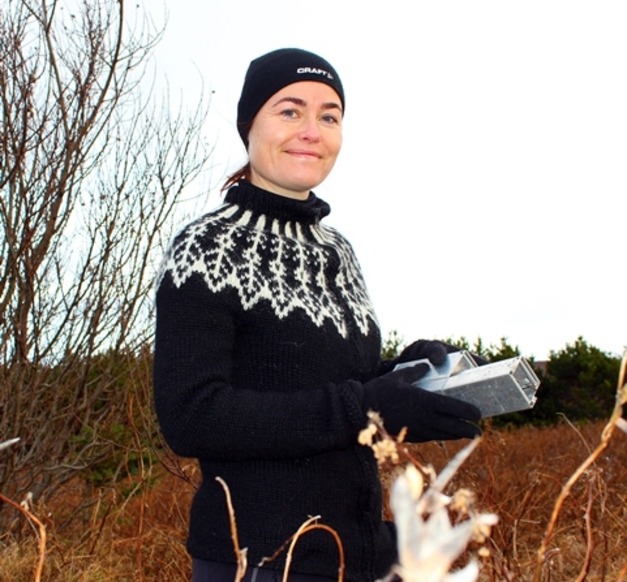Doctoral candidate Ester Rut Unnsteinsdóttir’s research on the arctic fox have become renowned in Iceland. Another mammal, much smaller, is the main subject of her doctoral studies: the field mouse. Unnsteinsdóttir is following in the footsteps of the late Páll Hersteinsson, Professor at the University of Iceland; a great pioneer in research on these two species. Hersteinsson was Unnsteinsdóttir’s supervisor until his death in 2011.
“Field mice can be found all over the country. They probably came to Iceland with humans in the 10th century”, says Unnsteinsdóttir about this tiny rodent. “Iceland marks the northern boundary for the species, lacking its main habitats, i.e. forested areas with large seeds such as acorns and beech seeds. The mice are nevertheless hardy, and the only rodent that survives through the year in nature.”
Unnsteinsdóttir says that the field mice make up for the lack of seeds by eating insects and worms, or anything edible they can find. “They only breed during the summer, and since only a few animals survive winter their DNA becomes an important contribution to the stock.”
Unnsteinsdóttir’s study follows a stock of field mice along ditch banks and on the beach in Kjalarnes in west Iceland. Mice were caught every month. The mice caught were marked, weighed, sexed and then released in the same place. Through the re-catching of known mice stock size, viability, growth, breeding and choice of habitat could be determined. “Field mice were caught in traps in similar areas for dissection to determine factors such as fertility, food choices, and other elements important to the research on the stock,” says Unnsteinsdóttir. To get a comparison with mice in a different habitat, mice were caught for a period in a mixed forest at Mógilsá.
“Field mice are very dispersed in Kjalarnes and the density of mice fluctuates through the year. The population is largest in autumn, and smallest in spring”, says Unnsteinsdóttir. “Viability is very low in early winter, but reasonably high in the middle of winter. Low temperatures at the start of winter had great impact on viability in the mice in Kjalarnes, but not at Mógilsá, where density related effects are prevalent. These are connected with the supply of resources such as food, and nest sizes.” Unnsteinsdóttir says that weather impact on stock size in mice has not been established before.
According to Unnsteinsdóttir catching mice in the spring and early summer was difficult, but easy once breeding was over. “Therefore we tried to calculate stock size using indirect methods, based on the composition of mice caught in autumn and their estimated times of birth according to known growth curves and the weight of caught animals. This is a standard method in ichthyology where fish stocks are estimated based on age composition in catches, but the method has never been tested on rodents with short life spans.” Unnsteinsdóttir carried out this part of the research with her associates at the University of Iceland, Bruce McAdam, post-doctoral candidate and Jónas P. Jónasson, doctoral student in ocean ecology. Ester says that it is an innovation to use the methodology of ichthyology in trapping live animals.“ Protected species are often being studied, even species that are on the brink of extinction and therefore catching them alive is vital,” says Unnsteinsdóttir, who claims that her approach introduces a novelty to the scientific community.
Our conclusions in Kjalarnes, along with the comparison to the forested area in Mógilsá, reflect typical conditions in Iceland and they indicate that the field mice of Kjalarnes live under harsher conditions than their cousins in the leaf forests of Europe.”
Supervisors: Páll Hersteinsson, Professor at the Faculty of Life and Environmental Sciences (deceased), Tómas Grétar Gunnarsson, Head of the University’s research centre in the South of Iceland, Arnþór Garðarsson, Professor Emeritus at the University of Iceland, and Rolf A. Ims, Professor at the University of Tromsö.



